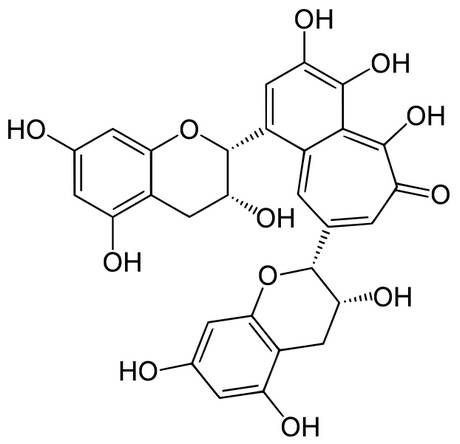Time for coffee and tea
Antioxidants properties of black tea
Black Tea and Health
Recommended Pages
Black Tea and its Antioxidant Properties
Much work has been done into the way that the body is able to take up antioxidants of green tea and how it is able to metabolize them. Interestingly despite 80% of all tea consumption being of black tea much less research has been done on the bioavailability of black tea antioxidants.
This is mainly due to problems associated with measuring some of the black tea components in the body as opposed to a want of trying.
Levels of Catechin Antioxidants in Black Tea
Despite the above difficulties it has been found that the concentration of tea catechin (which have antioxidant properties) is at its highest from about one and a half to two and a half hours after consumption of the black tea beverage.
 Structure of 2,3-trans-catechin. Source
Structure of 2,3-trans-catechin. Source
In research on the subject in which volunteers consumed black tea every two hours it was found that less than 2% of the antioxidants found in black tea passed into the bodies plasma or urine fluids.
This strongly suggests that either the body can not take up tea antioxidants rapidly, or that the antioxidants of black tea are rapidly metabolized by the body.
Interestingly, in research looking at the antioxidant levels in green and black tea consumption green tea catechin levels were higher in the plasma than those of black teas, however there was no change in the anti oxidative potential! This suggests that black tea antioxidants such as theaflavins and thearubigins are rapidly absorbed and metabolized by the body.

The structure of theaflavin: Source.
Many Compounds Found in Black Tea Have Greater Antioxidant Properties Than Those of Green Tea
It has often been thought that black tea has much lower antioxidant properties than that of green tea has it has much lower monomeric polyphenols due to the way that black tea is manufactured. However it is found that though many of the polymerization alterations that occur in the manufacturing of black tea do not have lower antioxidant properties. in fact the partial polymerized theaflavins and catechins of black teas have much higher antioxidant properties than those of the common monomeric antioxidants such as ascorbic acid and glutathione found in green teas.
Black Tea Theaflavins
It has been found that theaflavins found in black tea are able to prevent the generation of reactive oxygen species. Tea flavins have an antioxidant potential somewhere between that of vitamin C and vitamin E. However even in large drinkers of tea the amount of tea flavonols in the blood is much smaller than that of vitamin C. Theaflavins are also able to inhibit the ability of prooxidative enzymes to work, and are able to interact with metal ions such as copper or iron to prevent the generation of free radicals. Black tea has been demonstrated to increase the antioxidant activity of the plasma, by as high as 76% in some reports, but as low as 2% in others. Nonetheless it appears that black tea antioxidants have a positive influence on the way that the body is able to deal with damaging free radicals.
Therefore the drinking of black tea should be seen as both enjoyable and healthy.
ReferencesLuczaj et al (2005). Antioxidant properties of black tea. Prev. Med. 40: 910 to 918
Halder et al (1998). Protective role of black tea against oxidative damage of human red blood cells. Biochem Biophys Res Commun 44:903– 7.
Leenen et al (2000). A single dose of tea with or without milk increases plasma antioxidant activity in humans. Eur J Clin Nutr 54:87– 92.